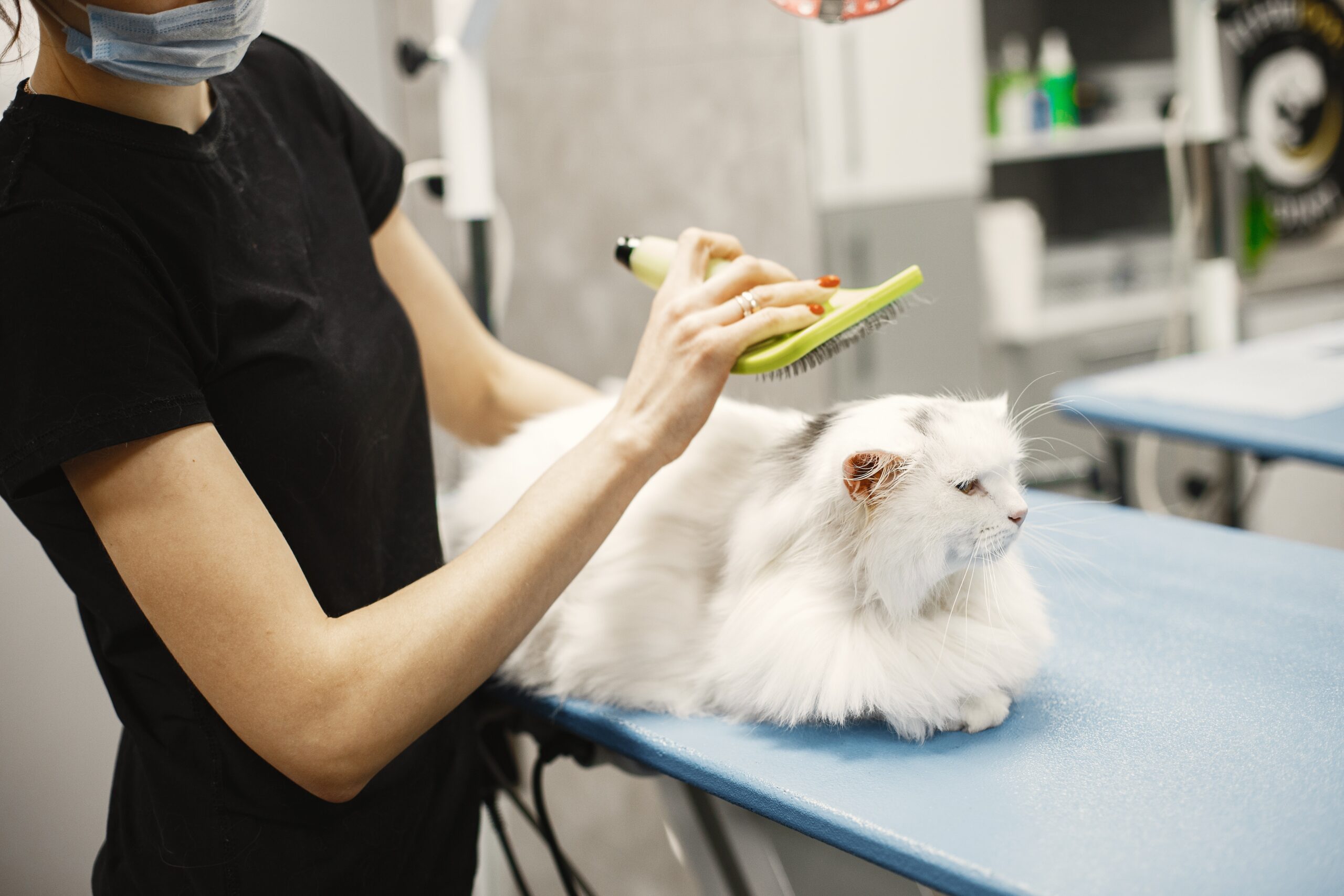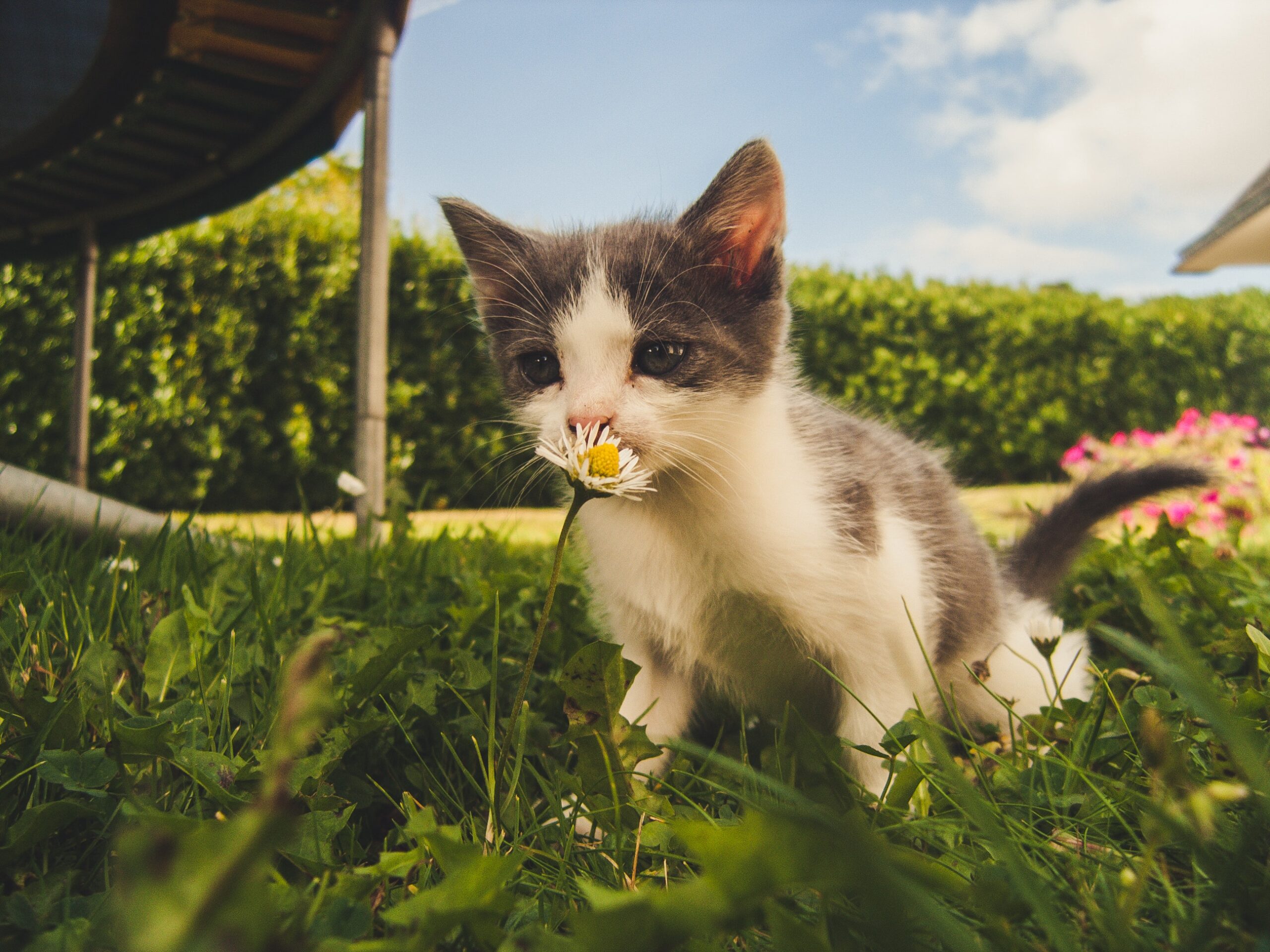As beloved members of our families, our feline companions deserve the best care and protection from potential health hazards. Flea and tick prevention is an essential aspect of responsible cat ownership. These tiny pests may seem insignificant, but they can wreak havoc on a cat’s well-being. Understanding the importance of preventing flea and tick infestations is vital to ensuring our cats lead healthy, happy lives.
Fleas and ticks are not just a nuisance; they are carriers of various diseases that can severely impact a cat’s health. Fleas, for instance, are notorious for transmitting tapeworms and causing skin irritations, such as flea allergy dermatitis (FAD), which can lead to excessive scratching and hair loss. Ticks, on the other hand, can transmit serious illnesses like Lyme disease and anemia, both of which can be life-threatening for cats.
By implementing effective flea and tick prevention measures, cat owners can safeguard their furry friends from these health risks. Prevention is not only easier than dealing with a full-blown infestation but also more cost-effective and less stressful for both the cat and the owner.
Understanding the Risks of Flea and Tick Infestations
To comprehend the urgency of flea and tick prevention, it’s crucial to grasp the potential consequences of an infestation. Fleas are highly prolific breeders, and a single female flea can lay hundreds of eggs in just a matter of days. As a result, infestations can quickly spiral out of control, spreading throughout the home and inflicting considerable discomfort on the cat.
When left untreated, flea and tick infestations can lead to serious health issues. Cats may suffer from severe itching, inflammation, and secondary skin infections due to excessive scratching. In some cases, heavy infestations can cause anemia, particularly in young kittens or older cats with weaker immune systems.
Ticks, on the other hand, can attach themselves to a cat’s skin, feeding on their blood for extended periods. During this time, ticks can transmit dangerous pathogens, leading to infections that may have long-term consequences for the cat’s health.
The primary purpose of this article is to empower cat owners with the knowledge they need to make informed decisions regarding flea and tick prevention. With a plethora of preventive options available, ranging from conventional chemical-based treatments to natural remedies, cat owners can feel overwhelmed and unsure about what is best for their furry companions.
By providing comprehensive information on various preventive methods, their pros and cons, as well as their potential risks, cat owners can gain a better understanding of what suits their cat’s unique needs. This article aims to bridge the knowledge gap, dispel common myths, and offer practical tips for implementing safe and effective flea and tick prevention strategies.
In the following sections, we will delve into the specifics of flea and tick control methods, environmental measures to reduce infestation risks, the importance of regular check-ups, and more. By the end of this article, cat owners will be equipped with the tools they need to protect their feline friends from the perils of fleas and ticks, promoting a healthier and happier life for their cherished companions.
Understanding Fleas and Ticks
Overview of Fleas and Ticks: Identification and Lifecycle
Fleas:
Fleas are small, wingless insects that are notorious for their ability to jump long distances, making them adept at infesting cats and other animals. There are several species of fleas, but the most common one affecting cats is the “Ctenocephalides felis” or the cat flea. Adult fleas are reddish-brown and about 1-3 mm in length, visible to the naked eye. They have flattened bodies, which allow them to move through the fur with ease.
Flea Life Cycle:
- Fleas have a complex life cycle comprising four stages: egg, larva, pupa, and adult. Female fleas lay their eggs on the cat’s fur, but the eggs quickly fall off and scatter throughout the cat’s environment. Once the eggs hatch, larvae emerge and feed on organic debris, such as flea feces and skin flakes, in the environment. The larvae then spin a cocoon and transform into pupae, where they can remain dormant for weeks or even months. When conditions are favorable, the adult fleas emerge from the pupae and seek a host, such as your cat, to feed on blood and repeat the cycle.
Ticks:
Ticks are arachnids, closely related to spiders and scorpions, and are parasitic blood-feeding organisms. They have eight legs and come in various sizes, ranging from tiny nymphs to engorged adult ticks. Ticks cannot jump or fly, but they climb onto hosts when they brush against vegetation, waiting for an opportunity to attach themselves.
Tick Lifecycle:
- Like fleas, ticks also have a four-stage life cycle: egg, larva, nymph, and adult. After hatching from eggs, ticks progress through these stages by feeding on blood. They require a blood meal at each stage to grow and develop. Ticks are opportunistic feeders, and while they prefer certain hosts, they can latch onto cats and other animals they encounter in their environment.
Common Health Risks Associated with Flea and Tick Infestations in Cats
Flea-Related Health Risks:
- Fleas pose several health risks to cats, and their bites can cause intense itching and discomfort. In some cats, flea saliva can trigger an allergic reaction, leading to flea allergy dermatitis (FAD). FAD results in severe itching, hair loss, and skin inflammation, requiring immediate treatment to alleviate the cat’s suffering. Moreover, frequent blood loss due to fleas feeding on the cat can lead to anemia, especially in young or immunocompromised cats.
Fleas are also intermediate hosts for tapeworms, a type of intestinal parasite. When cats groom themselves and ingest fleas carrying tapeworm eggs, they can become infected with these parasites. Untreated tapeworm infestations can cause weight loss, poor coat condition, and discomfort for the cat.
Tick-Related Health Risks:
- Ticks are vectors for various diseases, and when they bite and feed on a cat’s blood, they can transmit pathogens into the cat’s bloodstream. Common tick-borne diseases in cats include:
- Lyme disease: Caused by the bacterium Borrelia burgdorferi, transmitted through the bite of infected ticks.
- Cytauxzoonosis: A severe and often fatal disease caused by the protozoan parasite Cytauxzoon felis, transmitted by certain ticks.
- Ehrlichiosis and Anaplasmosis: Bacterial infections transmitted through tick bites, leading to fever, lethargy, and other symptoms.
- Tick paralysis is another concern, especially with certain tick species. The toxins present in the tick’s saliva can cause paralysis, starting with the hind limbs and moving toward the front, potentially resulting in life-threatening respiratory failure if not promptly addressed.
Understanding the identification and life cycle of fleas and ticks, as well as the health risks they pose, is essential for cat owners to recognize potential problems and take proactive steps toward prevention and protection. In the subsequent sections of this article, we will explore various preventive measures available, both conventional and natural, to help cat owners make informed decisions about their feline companions’ well-being.
Conventional vs. Natural Prevention Methods
Chemical-Based Preventive Measures: Pros and Cons
Topical Treatments:
- Topical flea and tick treatments are one of the most commonly used chemical-based preventive measures for cats. These treatments usually come in the form of spot-on products, where a small amount of the solution is applied directly to the cat’s skin, typically between the shoulder blades or at the base of the neck.
Pros:- Highly effective at killing and repelling fleas and ticks.
- Easy to apply and typically provides long-lasting protection.
- Some products also target other parasites like ear mites and roundworms.
- Water-resistant formulations available for cats that are frequently bathed or exposed to water.
- Cons:
- Some cats may experience mild skin irritation or hair loss at the application site.
- There have been rare reports of adverse reactions, including neurological issues, in sensitive cats.
- Care must be taken to prevent cats from grooming each other after application, as ingestion of certain topical products can be toxic.
Oral Medications:
- Oral flea and tick medications come in the form of chewable tablets or soft chews that are administered to the cat. These medications work systemically, circulating in the cat’s bloodstream and killing fleas and ticks when they feed on the cat’s blood.
Pros:- Highly effective at preventing flea and tick infestations.
- No risk of topical residue, making it safer for households with small children.
- Easier to administer than topical treatments, especially for cats who resist spot-on applications.
- Cons:
- Some cats may be reluctant to take oral medications due to taste or texture.
- In rare cases, cats may experience gastrointestinal upset or other adverse reactions.
- Certain oral medications are prescription-only, requiring a visit to the veterinarian.
Natural Preventive Methods: Effectiveness and Safety Considerations
Herbal Repellents:
- Herbal repellents often contain natural ingredients like citronella, eucalyptus, lemongrass, and lavender, which are known for their repelling properties against fleas and ticks.
Effectiveness:- Herbal repellents may offer some level of protection against fleas and ticks, but their effectiveness can vary depending on the specific ingredients and formulation.
- Safety Considerations:
- While generally considered safe, some cats may be sensitive to certain herbal oils, leading to skin irritation or allergic reactions.
- It’s essential to use products specifically designed for cats, as some ingredients safe for dogs may be toxic to cats.
Essential Oils:
- Essential oils derived from plants, such as cedarwood, peppermint, and neem, are sometimes used as natural flea and tick repellents.
Effectiveness:- Essential oils can provide some degree of repellent effect, but their potency varies, and they may not be as effective as chemical-based products.
- Safety Considerations:
- Essential oils are highly concentrated and should never be used undiluted on cats, as they can be toxic when ingested or absorbed through the skin.
- Cats lack certain liver enzymes to metabolize essential oils, increasing the risk of toxicity.
Natural Collars:
- Natural flea and tick collars are infused with herbal extracts or essential oils to repel parasites.
Effectiveness:- The effectiveness of natural collars can vary, and they may not provide as robust protection as conventional collars.
- Safety Considerations:
- As with other herbal products, individual cat sensitivity to the collar’s ingredients should be monitored.
- Some natural collars may have a shorter duration of effectiveness compared to chemical-based collars.
When considering natural preventive methods, it’s crucial to consult with a veterinarian to ensure they are safe for your cat and to determine the most appropriate approach based on your cat’s lifestyle and the level of flea and tick exposure. In the next section, we will explore how cat owners can make informed decisions when choosing the right prevention method for their feline friends.
Choosing the Right Prevention Method for Your Cat
Consulting a Veterinarian: Understanding Your Cat’s Specific Needs
When it comes to flea and tick prevention, there is no one-size-fits-all approach for cats. Each cat is unique, and factors such as age, health condition, breed, and previous medical history play a crucial role in determining the most suitable preventive method. To make an informed decision, consulting a veterinarian is essential.
Veterinary Examination:
- Schedule a comprehensive veterinary examination for your cat. The vet will assess your cat’s overall health and discuss any existing medical conditions or allergies that may influence the choice of preventive measures.
Medication Compatibility:
- If you are considering chemical-based preventives, your vet will recommend products that are safe and suitable for your cat’s age and size. They will also consider any other medications your cat may be taking to avoid potential interactions.
Sensitivities and Allergies:
- Cats may have individual sensitivities to certain products or ingredients. Your veterinarian can help identify potential allergens and recommend alternatives to avoid adverse reactions.
Frequency of Application:
- Some preventive methods require more frequent application than others. Your vet can guide you on selecting products that align with your schedule and the cat’s comfort.
Evaluating the Cat’s Lifestyle and Environment: Indoor vs. Outdoor Cats
Indoor Cats:
- Cats that primarily live indoors have a lower risk of flea and tick exposure. However, prevention is still essential, as these pests can find their way inside through other pets, people, or items brought in from the outdoors.
- Recommended Prevention: For indoor cats, a monthly topical or oral treatment might suffice, as their exposure to fleas and ticks is generally limited.
Outdoor Cats:
- Cats that spend time outdoors are at higher risk of encountering fleas and ticks in their environment. They may be exposed to wooded areas, tall grass, and contact with other animals.
- Recommended Prevention: Outdoor cats may require more robust protection, such as a long-lasting topical treatment or a collar that provides continuous coverage.
Considering Multi-Pet Households: Interactions and Risks
Multiple Cats:
- If you have multiple cats living together, their interactions can influence the choice of flea and tick prevention. Cats may groom each other, potentially ingesting products applied to their housemates.
- Recommended Prevention: Opt for treatments that are safe for all cats in the household. Discuss with your veterinarian to find the best option that minimizes potential risks.
Cats and Dogs:
- If you have both cats and dogs, avoid using dog-specific flea and tick products on cats, as they can be toxic to felines. Always read labels carefully and use products formulated specifically for cats.
In conclusion, choosing the right flea and tick prevention method for your cat involves a thorough understanding of your cat’s individual needs, lifestyle, and environment. Consulting a veterinarian will provide personalized recommendations and ensure the chosen preventive measures are safe and effective for your feline companion. Additionally, considering the interactions and potential risks in multi-pet households will help keep all pets protected from these pesky parasites. By taking a proactive approach to flea and tick prevention, cat owners can help their furry friends lead healthy, happy lives free from the discomfort and risks associated with infestations.
Tips for Safe Flea and Tick Prevention
Proper Application of Chemical Preventive Products
Read and Follow Instructions:
- Carefully read the instructions on the product label before applying any chemical-based preventive. Pay attention to dosage, application method, and frequency.
Correct Dosage:
- Ensure you are using the appropriate dosage for your cat’s age, weight, and species. Never use a product meant for dogs on cats, as this can lead to toxicity.
Application Placement:
- For topical treatments, apply the product directly to the skin, preferably between the shoulder blades or at the base of the neck, where cats cannot lick it off.
Avoid Overlapping Products:
- Avoid using multiple flea and tick preventives simultaneously, as this can lead to overdosing and increase the risk of adverse reactions.
Monitoring for Adverse Reactions and Side Effects
Watch for Unusual Behavior:
- Keep a close eye on your cat after applying any preventive. Watch for signs of discomfort, such as excessive scratching, drooling, lethargy, or vomiting.
Contact Your Veterinarian:
- If you notice any concerning symptoms or reactions, contact your veterinarian immediately. They can provide guidance on what steps to take and may recommend an alternative preventive method.
Safely Integrating Natural Preventive Methods
Dilution and Proper Usage:
- If using herbal repellents or essential oils, always dilute them according to the manufacturer’s instructions. Avoid applying them directly to the cat’s skin or fur without proper dilution.
Avoid Sensitive Areas:
- When using natural repellents, avoid applying them near the cat’s eyes, nose, or mouth. Cats can groom themselves, and accidental ingestion of essential oils can be harmful.
Observe Your Cat’s Reaction:
- Monitor your cat closely after using natural preventive methods to ensure there are no adverse reactions or signs of discomfort.
Discontinue if Necessary:
- If your cat shows any signs of sensitivity or adverse reactions to natural products, discontinue use immediately and consult your veterinarian.
Regular Grooming and Inspection
Regular Brushing:
- Regular grooming helps in early detection of fleas, ticks, or skin issues. Use a fine-toothed comb to check for any signs of infestation.
Inspect Problem Areas:
- Focus on areas where fleas and ticks are commonly found, such as behind the ears, around the neck, and along the base of the tail.
Flea Comb:
- Use a flea comb to remove adult fleas and flea dirt (flea feces) from your cat’s fur. Dip the comb in soapy water to drown any live fleas.
Prompt Removal of Ticks:
- If you find a tick on your cat, remove it carefully using tweezers. Grasp the tick close to the skin and pull upward with steady, gentle pressure. Disinfect the bite area afterward.
By following these tips for safe flea and tick prevention, you can protect your cat from potential health risks while ensuring their well-being and comfort. Regular monitoring, responsible product usage, and proactive grooming practices are essential steps in maintaining a healthy and pest-free environment for your feline companion.
Environmental Flea and Tick Control
Maintaining a Clean Living Environment
Vacuum Regularly:
- Regular vacuuming helps remove flea eggs, larvae, and pupae from carpets, rugs, and furniture. Dispose of the vacuum bag immediately after each use to prevent reinfestation.
Launder Bedding and Linens:
- Wash your cat’s bedding, blankets, and any other washable items in hot water to eliminate flea eggs and larvae.
Use Pet-Safe Cleaners:
- When cleaning your home, use pet-safe cleaners to avoid exposing your cat to harmful chemicals.
Pay Attention to Outdoor Spaces:
- Fleas and ticks can hitch a ride into your home on shoes and clothing. Ensure entryways are clean and consider using doormats to trap any pests before they enter.
Effective Yard Treatments for Outdoor Cats
Mow the Lawn Regularly:
- Keeping the grass short reduces the areas where fleas and ticks can hide.
Remove Debris and Leaf Litter:
- Clean up fallen leaves, grass clippings, and other yard debris where fleas and ticks may thrive.
Use Nematodes:
- Nematodes are microscopic worms that prey on flea larvae in the soil. Applying nematodes to your yard can help control flea populations naturally.
Consider Natural Repellents:
- There are natural yard sprays available that use ingredients like cedar oil to repel fleas and ticks. Consult with your veterinarian before using any yard treatments to ensure they are safe for your cat.
Reducing Wildlife Attractants: Prevention Beyond Your Property
Secure Trash Bins:
- Make sure your outdoor trash bins have tightly fitting lids to discourage wildlife, such as raccoons and opossums, which can carry fleas and ticks.
Restrict Access to Wildlife:
- Limit your cat’s exposure to wildlife, as they can carry parasites. Avoid letting your cat roam freely in areas where wildlife is common.
Check Your Cat After Outdoor Adventures:
- After your cat spends time outdoors, inspect them for fleas and ticks. Promptly remove any ticks you find to reduce the risk of transmission.
Consider Outdoor Enclosures:
- If your cat enjoys spending time outdoors, consider creating a secure outdoor enclosure or “catio” to provide a safe environment while minimizing contact with wildlife.
By implementing effective environmental flea and tick control measures, you create a more inhospitable environment for these pests both inside and outside your home. Combining preventive methods with a clean living space and well-maintained yard reduces the likelihood of flea and tick infestations and ensures a safer and more enjoyable environment for your cat. Remember to consult with your veterinarian for personalized advice on environmental control methods and other preventive measures specific to your cat’s needs.
The Importance of Regular Check-ups
Veterinary Examinations and Preventive Measures
Regular veterinary check-ups are essential for maintaining your cat’s overall health and well-being. These visits not only allow the veterinarian to address any existing health concerns but also provide an opportunity to discuss and implement preventive measures against fleas and ticks.
Comprehensive Health Assessment:
- During a routine veterinary examination, your cat’s overall health will be assessed. The vet will check for signs of flea or tick infestations, skin irritations, and other health issues.
Tailored Preventive Recommendations:
- Based on your cat’s lifestyle, medical history, and risk factors, the veterinarian will recommend the most appropriate flea and tick prevention methods. They can advise on the best products and application methods that are safe and effective for your specific cat.
Prescription Medications:
- Some preventive medications require a prescription from a veterinarian. Regular check-ups allow you to obtain the necessary prescriptions for these products.
Vaccination Updates:
- Routine check-ups also ensure your cat’s vaccinations are up-to-date, protecting them from other diseases that may weaken their immune system and make them more susceptible to flea and tick-related issues.
Scheduling Routine Check-ups and Follow-ups
Frequency of Check-ups:
- The frequency of veterinary check-ups depends on your cat’s age and health status. For younger cats and senior cats, more frequent visits may be recommended. As a general guideline, annual check-ups are typically advised for adult cats.
Follow-ups and Reassessment:
- If your cat experiences any adverse reactions or issues related to flea and tick prevention, follow up with your veterinarian promptly. They can reassess the preventive measures and recommend alternative options if necessary.
Stay Consistent:
- Sticking to a regular schedule of check-ups and preventive treatments is crucial for effective flea and tick prevention. Consistency ensures that your cat’s protection remains uninterrupted throughout the year.
Monitoring for Changes:
- Between check-ups, keep a close eye on your cat’s behavior and health. If you notice any unusual symptoms or signs of infestation, contact your veterinarian for guidance.
Remember that preventive measures are more effective when applied consistently and when tailored to your cat’s individual needs. Regular veterinary check-ups are an integral part of maintaining your cat’s health and ensuring they receive the best possible care. By working closely with your veterinarian, you can create a comprehensive flea and tick prevention plan that prioritizes your cat’s well-being and minimizes the risks associated with these pesky parasites.
Dealing with Flea and Tick Infestations
Recognizing the Signs of Infestations
Recognizing the signs of flea and tick infestations early is crucial for effective intervention. Keep an eye out for the following signs:
Excessive Scratching and Biting:
- Cats with flea or tick infestations often exhibit increased scratching, biting, or licking in an attempt to alleviate itching and discomfort.
Hair Loss and Skin Irritation:
- Fleas can cause allergic reactions, leading to hair loss, redness, and inflammation on the skin. Ticks may leave small, red, irritated bite marks.
Flea Dirt:
- Flea dirt is flea feces that resemble tiny black specks and may be visible on the cat’s fur or in their bedding.
Presence of Ticks:
- Inspect your cat’s skin for the presence of ticks, which are visible as small, dark, oval-shaped parasites, especially in areas like the ears, neck, and underarms.
Immediate Steps to Take When Infestation Occurs
If you suspect or confirm a flea or tick infestation on your cat, take prompt action to alleviate their discomfort and prevent further spread:
Isolate the Cat:
- If you have multiple pets, isolate the infested cat from others to prevent the infestation from spreading.
Use a Flea Comb:
- Use a fine-toothed flea comb to remove adult fleas and flea dirt from your cat’s fur. Dip the comb in soapy water after each pass to drown the fleas.
Remove Ticks Carefully:
- If you find ticks on your cat, use tweezers to carefully grasp the tick as close to the skin as possible. Gently pull upward to remove the tick. Disinfect the bite area afterward.
Wash Bedding and Vacuum:
- Launder your cat’s bedding and any washable items in hot water to kill flea eggs and larvae. Vacuum all areas where the cat frequents to remove fleas and eggs.
Combining Treatments: Vet Assistance and Home Care
Seek Veterinary Guidance:
- If you suspect an infestation or have difficulty managing it on your own, consult your veterinarian. They can confirm the infestation and recommend appropriate treatment options.
Prescription Medications:
- Your veterinarian may prescribe specific medications to eliminate fleas and ticks effectively. These may include topical treatments, oral medications, or a combination of both.
Environmental Control:
- Treat your home and yard for fleas and ticks to prevent reinfestation. Use veterinarian-approved sprays, foggers, or powders to target areas where these pests may be hiding.
Follow-up Treatments:
- Flea and tick infestations may require multiple treatments to completely eradicate the pests. Follow your veterinarian’s instructions on the proper timing and frequency of treatment.
Regular Grooming and Inspection:
- Continue regular grooming and inspections even after the infestation is under control to monitor for any signs of a recurrence.
Dealing with a flea or tick infestation can be challenging, but with prompt action and a comprehensive approach involving veterinary assistance and home care, you can effectively address the issue and provide relief for your cat. Remember to work closely with your veterinarian to develop a tailored treatment plan that prioritizes your cat’s health and comfort.
Myths and Misconceptions about Flea and Tick Prevention
Addressing Common Misinformation
Myth: Indoor Cats Don’t Need Prevention
- Fact: While indoor cats have a lower risk of flea and tick exposure, they are not entirely immune. Fleas and ticks can still be brought into the home on shoes or clothing, and infestations can occur. Preventive measures are necessary for all cats to ensure their well-being.
Myth: Home Remedies Are Just as Effective as Commercial Products
- Fact: Home remedies like vinegar, garlic, or essential oils are often promoted as natural flea and tick repellents, but their effectiveness is limited and may not provide adequate protection. Commercial products formulated specifically for cats have been extensively tested for safety and efficacy.
Myth: Natural Products Are Always Safe
- Fact: While some natural products can be safe and effective, others may be toxic to cats. Essential oils, in particular, can be harmful when not properly diluted or when used inappropriately. Always consult your veterinarian before using any natural remedies on your cat.
Debunking Harmful Practices
Myth: Using Dog Flea and Tick Products on Cats Is Safe
- Fact: Dog products often contain ingredients that can be toxic to cats, such as permethrin. Using dog flea and tick products on cats can lead to severe reactions and even be fatal. Always use products specifically labeled for cats.
Myth: Shaving the Cat’s Fur Will Eliminate Fleas and Ticks
- Fact: Shaving the cat’s fur may reduce the number of fleas and ticks present, but it does not eliminate the problem entirely. These pests can still attach to the cat’s skin, making them susceptible to infestations.
Myth: Fleas and Ticks Disappear in Cold Weather
- Fact: While fleas and ticks are more active in warm weather, they can still survive in colder temperatures, especially indoors or in protected outdoor areas. Year-round prevention is necessary to ensure continuous protection.
Myth: Flea Collars Alone Are Sufficient Protection
- Fact: While flea collars can be effective, they may not provide comprehensive protection against ticks or cover other preventive needs. Combining different prevention methods, as recommended by your veterinarian, offers more comprehensive coverage.
Myth: Natural Preventives Have No Side Effects
- Fact: Natural preventives can still cause adverse reactions in some cats, particularly those with allergies or sensitivities to certain ingredients. Always monitor your cat for any signs of discomfort when using natural products.
It is essential to base your flea and tick prevention decisions on reliable information and professional guidance from your veterinarian. Avoid falling for myths and misconceptions that can compromise your cat’s health and well-being. By using appropriate, veterinarian-approved preventive methods, you can provide your feline companion with the protection they need against fleas and ticks while ensuring their safety and comfort.
Conclusion
Flea and tick prevention for cats is not merely a cosmetic concern but a crucial aspect of responsible pet ownership. These tiny parasites can cause significant discomfort and pose serious health risks to our feline companions. Fleas can lead to skin irritations, allergies, and transmit tapeworms, while ticks can transmit dangerous diseases. The consequences of infestations can be severe and impact both the cat’s quality of life and the well-being of your entire household.
As cat owners, we have the power to protect our furry friends from the perils of fleas and ticks. This article aimed to empower you with knowledge, helping you make informed decisions about the best preventive methods for your cat’s unique needs. By understanding the differences between conventional and natural preventives, recognizing signs of infestations, and implementing environmental control measures, you can create a comprehensive prevention plan that ensures your cat’s safety and comfort.
Consistency is the key to successful flea and tick prevention. Whether you have an indoor or outdoor cat, regular veterinary check-ups, and preventive treatments are essential. By working closely with your veterinarian, you can select the most suitable products and create a prevention plan that addresses your cat’s individual risks and lifestyle. Avoid falling for myths and harmful practices, and always prioritize the safety of your beloved feline companion.
Remember that the health and happiness of our cats depend on us as responsible pet owners. Flea and tick prevention should be a top priority throughout the year, ensuring that our feline friends can enjoy a pest-free life and thrive in a safe and loving environment.
Let us take proactive steps to safeguard our cats from these pesky parasites, promoting their well-being, and fostering the strong bond we share with them. With the right preventive measures, your cat can lead a healthy, active, and joyful life, bringing happiness to your home for many years to come.










